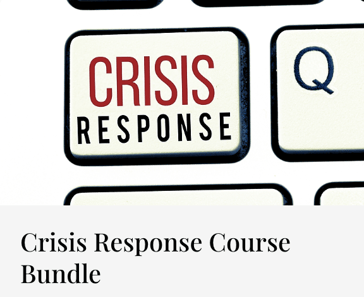Picture this: a parent receives a text notification that their child's school is on lockdown. With no further communication, their mind begins to spiral with unanswered questions and worst-case scenarios. Is my child safe? What's happening inside? Am I supposed to go get them or is it unsafe for me to be at the school? Without clear and timely updates, it’s easy to see how scary this situation would feel for all involved.
How do we avoid adding trauma and fear to an already tense situation? At Joffe, we recommend a number of best practices for all school administrators when proactively planning for crisis communications:
- Establish Clear Communication Protocols: Before a crisis occurs, establish clear protocols for how communication will be handled. Define who is responsible for communicating with which stakeholders, what channels will be used, and how frequently updates will be provided.
- One crucial aspect is designating a specific individual, typically the Head of School, as the sole authorized spokesperson to communicate with the media or news crews during an emergency. All staff members should be informed that if approached by the media, their response should be: "Please talk to our Head of School, Mr. Smith." This measure ensures consistent and controlled messaging, preventing the spread of conflicting or unverified information.
- Tailor Messages to the Audience: Different stakeholders need to know different information during a crisis. While you want to maintain consistency in the fundamental facts, it's equally important to tailor the recommended actions or instructions to each specific audience. The core details should remain uniform, but the desired actions or next steps should be tailored to the needs and roles of the various stakeholder groups.
- Consider a scenario where a BB gun was found on campus. ALL stakeholder groups should receive the information that: “Today, it was reported that a weapon was found in a locker on campus. After further investigation, it was determined to be a water gun.” But here, this is where information can start to look different. For parents, you want to provide additional information about talking to their students about bringing toys on campus that look like weapons. For the teachers, you want to remind them to whom they should report concerns of weapons and a reminder of the lockdown procedures.
- Express Empathy and Compassion: In times of crisis, empathy and compassion go a long way. Acknowledge the emotions and concerns of those affected by the crisis, and convey genuine care and support in your communications.
- When communicating about a sensitive issue, such as informing parents about the passing of a staff member over the weekend, you might say “Our community is deeply saddened by this loss. School counselors, Mental Health Professionals, and teachers will be available to support students during this time.”
- Be Transparent and Honest: Transparency builds trust. However, we know that providing accurate and honest information is a tricky balance. Not all stakeholders need to know all the facts, and when in a crisis, information can change quickly. Another layer of complexity is that it's crucial to recognize that every message sent has the potential to become a public statement, through traditional or social media.
- In the event of a potential security threat, such as a bear sighting on campus, a PA announcement could be made along these lines: “Attention staff and students, we are moving into a secure campus. We will not have any outdoor recess today and the schedule will be modified as there are to be no transitions between buildings. A bear was observed on the athletic field and we are working with animal control. Please do not exit the building.”
- Use Clear and Simple Language: Avoid jargon, technical language, or ambiguous terms that may confuse or alarm stakeholders. Use clear and simple language that is easy to understand, and provide explanations or context when necessary.
- When making a PA announcement, you want everyone on campus who will hear that message - staff, students, vendors, parents, visitors, etc - to know what it means and what they should do. The announcement might say: “We are in a secure campus due to neighborhood violence reported a few miles away. Please only enter and exit the campus through the main office of the building. Do not leave through any other exterior door or go outside for regular activities.”
- Provide Timely Updates: During a crisis, timely updates are essential to keep stakeholders informed and reassured. Even if there are no new developments, acknowledge the situation and let people know when you will next communicate with them.
- A concise text update to teachers could read: “We are still in lockdown. The police are on the way. We will communicate again within 15 minutes.”
- Prepare and Practice: Conduct training and drills to ensure that everyone knows their roles and responsibilities in a crisis and what you expect of them when they receive different types of communication. This allows stakeholders to proactively notify the administration if one of the expected communication methods doesn’t work.
- You could have staff fill out a debrief form after a drill asking “Did you hear the PA announcement in your room? Did you receive the text message? Could you hear the message on your walkie-talkie?”
Effective crisis communication is not just about disseminating information, it's about providing reassurance, clarity, and support to those impacted by the situation. Thoughtful preparation and an understanding of best practices can build confidence before an emergency happens on campus.
 Our Joffe Academy Crisis Response Course Bundle is a strong addition to any emergency preparation process. Comprised of 10 trainings, this bundle provides valuable insights, practical strategies, and turnkey communication templates and scripts to empower yourself and your team with the skills needed to respond effectively to any challenge that may arise. Together, let’s foster a culture of preparedness and resilience in our work for school safety.
Our Joffe Academy Crisis Response Course Bundle is a strong addition to any emergency preparation process. Comprised of 10 trainings, this bundle provides valuable insights, practical strategies, and turnkey communication templates and scripts to empower yourself and your team with the skills needed to respond effectively to any challenge that may arise. Together, let’s foster a culture of preparedness and resilience in our work for school safety.
 For more on navigating crisis communication strategies, contact our good friends, Jane and Jim, at The Jane Group.
For more on navigating crisis communication strategies, contact our good friends, Jane and Jim, at The Jane Group.


